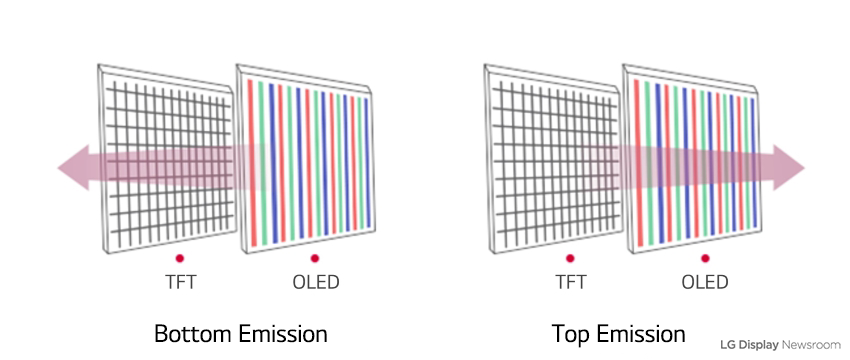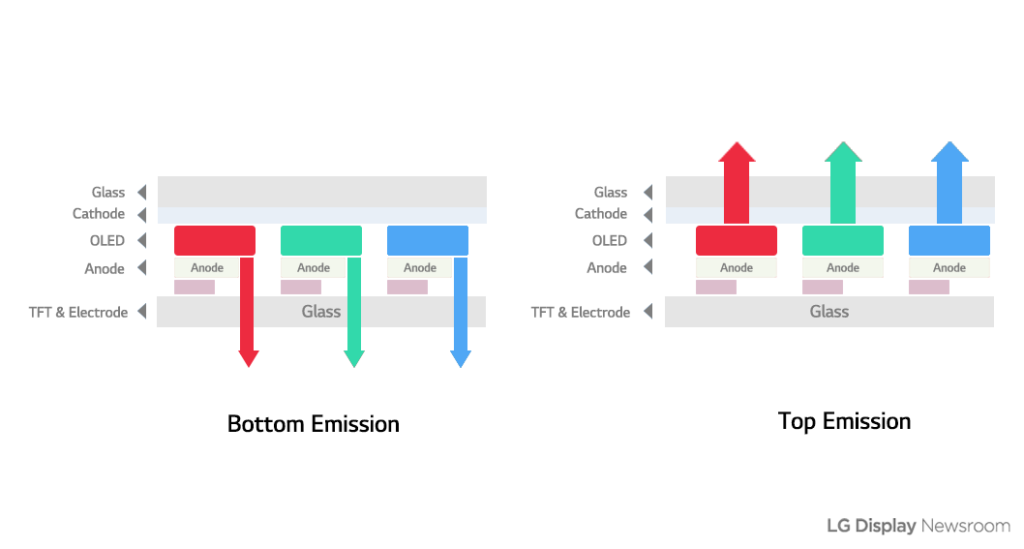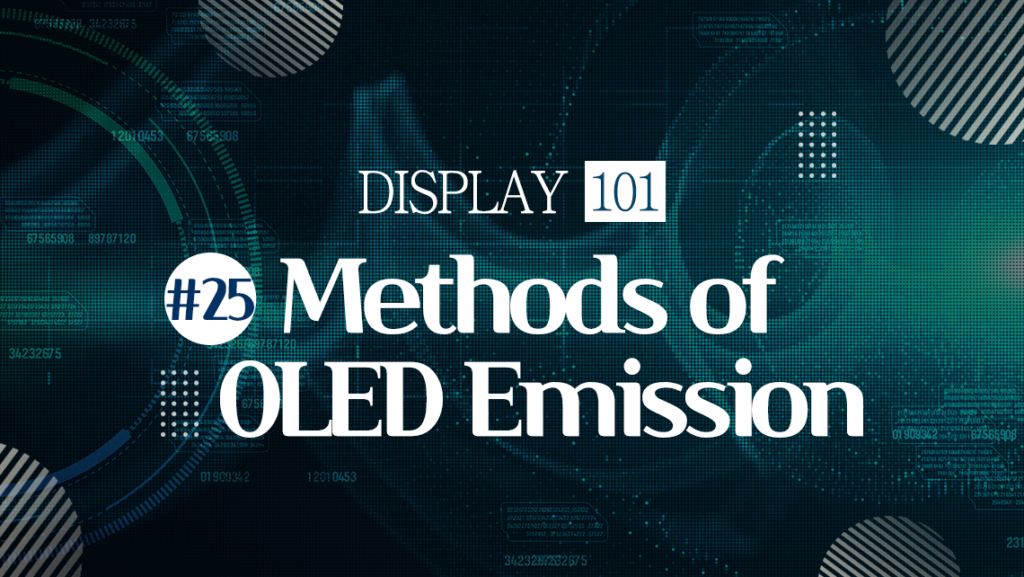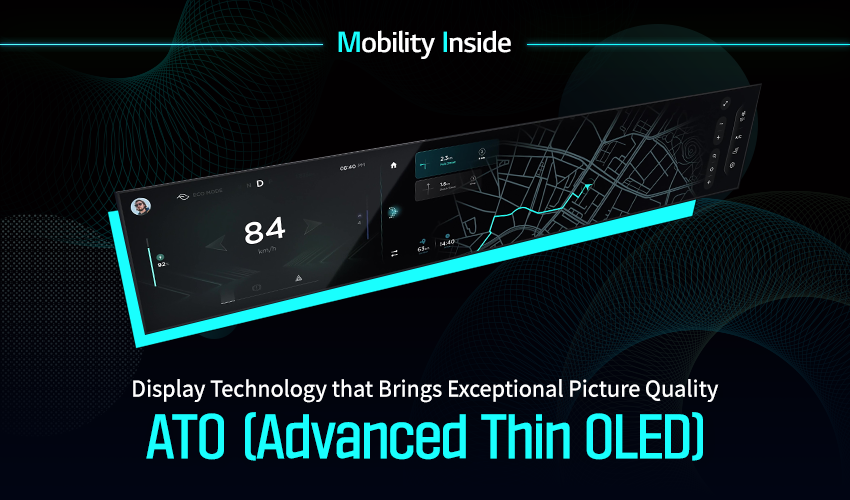DISPLAY 101
#25 Methods of OLED Emission

| Bottom Emission: An emission method in which the light from OLEDs passes through a thin-film transistor. Top Emission: An emission method in which the light from OLED shines directly without passing through any thin-film transistors. |
Do you remember the biggest feature of OLED? It’s the ability to emit light on its own. To achieve the self-emissive nature of OLED, two methods are used, which are categorized as “Bottom Emission” and “Top Emission” depending on where the light emitted from the OLED goes.
Bottom Emission involves positioning the OLEDs behind a thin-film transistor (TFT), letting the OLED light pass through the TFT before being seen. As a result, not all of the light emitted from the OLED can completely pass through the various circuits and TFT. On the other hand, Top Emission allows all OLED light to make it out because there are no obstructions blocking OLED emission. While Top Emission may seem advantageous from the perspective of emitting the light as it is, each emission method has its own pros and cons.
What’s the difference between Bottom Emission and Top Emission?

The bottom emission structure has a narrower light-emitting area (aperture ratio) compared to top emission because some of the light is blocked by the TFT and cannot be emitted outward. However, in the bottom emission structure, a metal cathode is used to transfer the light generated in the OLED emitting layer towards the TFT. Metals have a high light reflectivity, which allows the light to be directed towards the anode and transparent electrode direction, effectively minimizing light dispersion in all directions. This makes the implementation and process easier.
In contrast, the top emission structure has a design where the light generated in the OLED emitting layer penetrates the cathode. Due to the absence of TFT obstructing the light path, it allows for a larger area for light to be emitted outward. However, top emission technology faces technical challenges in the process of transmitting light through the cathode. To maximize light absorption, the cathode needs to be thin and transparent enough that it is not visible to the naked eye. However, if the cathode becomes excessively thin, it can lead to damage to the organic materials of the OLED or an increase in resistance, resulting in reduced current flow, causing difficulties in the manufacturing process.









